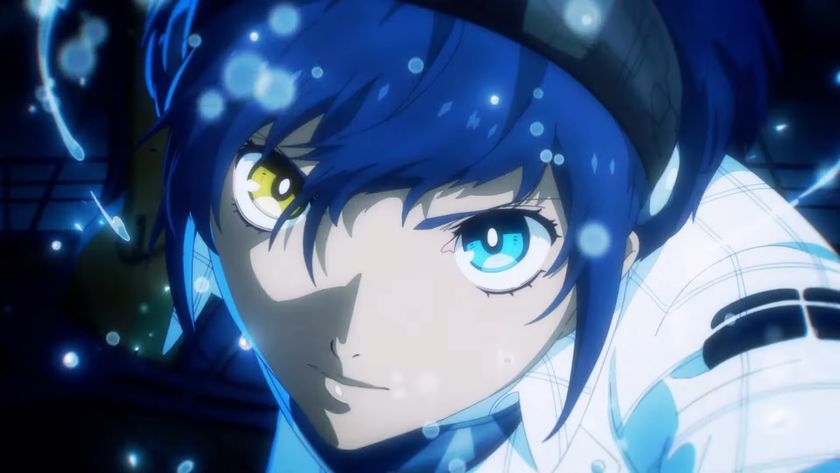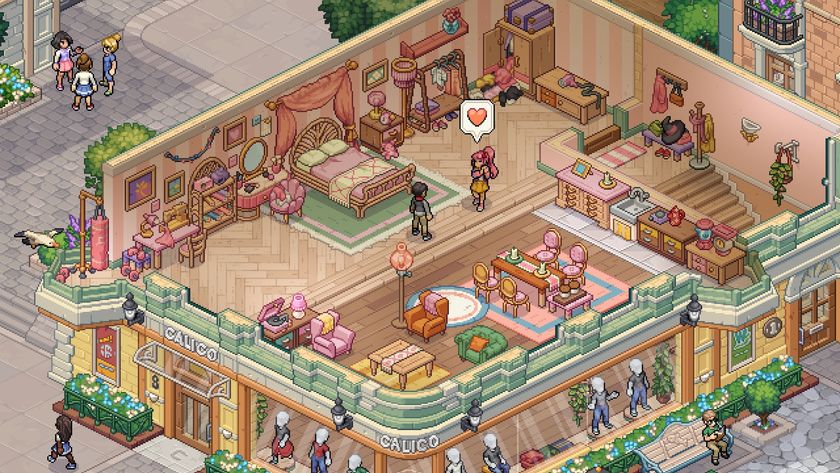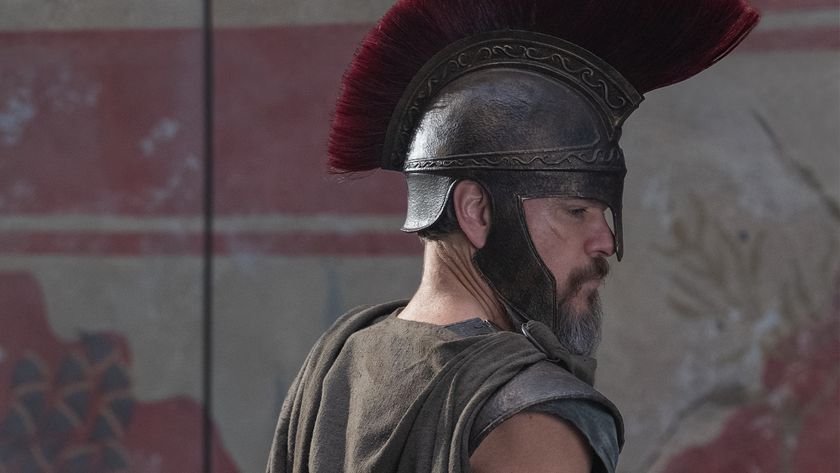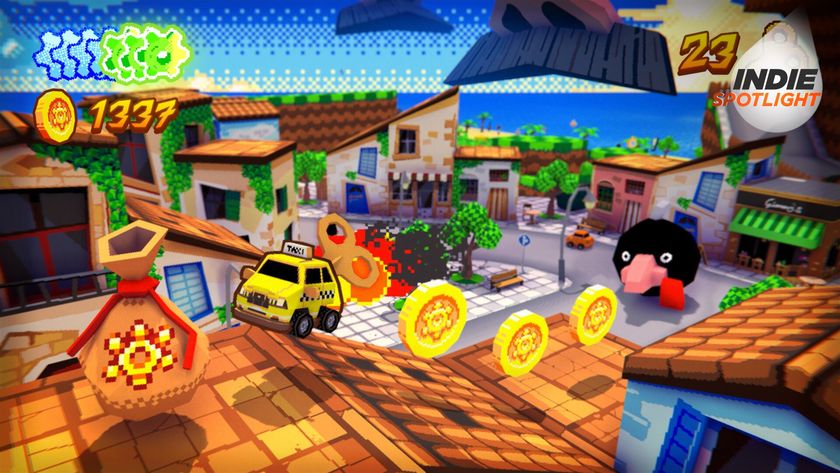How the creator of GTA combined sandbox shenanigans with souped-up superheroics to make Crackdown

Pacific City may have a lot to offer the prospective tourist – a thriving nightlife! A bustling downtown area! Window ledges strong enough to support the weight of a rippling superhero! – but it’s no coincidence that almost every discussion of Realtime Worlds’ superheroic sandbox starts the same way. Because, for all the love and effort that the Scottish developer poured into its sandbox setting and cel-shaded visuals, it was a set of good-ole-fashioned collectables that captured the imaginations of players at launch.
In any number of other games, the thought of tracking down 500 emerald-green Agility Orbs would sound like dreary drudgery or barely-disguised busywork, but Crackdown made the hunt for tokens feel worthwhile and even meaningful. That’s because each time you nab one of these glittering tokens you’re not only rewarded with a satisfying sound clip and a pleasing piece of visual effects work, you’re granted the gratifying knowledge that you’re one step closer to fulfilling a swivel-eyed superhero fantasy. By the end of the game, you’ll have levelled up a few abilities, sure, but those are just numbers. More significant is the fact that you’ll be a superstrong explosives-expert able to leap enormous buildings in a single jump from your super-powered legs.

But we’re getting ahead of ourselves, because you don’t start Crackdown on the cusp of grenade-spewing godhood. You start as a schmuck in a jumpsuit dropped into an urban open-world. At first glance, it’s entirely reminiscent of a near-future Grand Theft Auto, and so it should come as no surprise to learn that Realtime Worlds founder David Jones was also a key player in the creation of the sandbox crim-sim. Jones co-founded ACME Software in 1984, working with a handful of friends to produce shooters for the Atari ST and Commodore 64. Buoyed by this early success, the company expanded, changing its name to DMA Design before releasing Lemmings to enormous commercial success.
A few years later, Jones and his colleagues began work on an unassuming little game called Race’n’Chase for the Amiga. In 1997, that game finally reached the market as Grand Theft Auto, launching to an enthusiastic consumer reception and furious outrage in the tabloid press. Jones would also go on to be instrumental in the design and development of Grand Theft Auto 2, which featured multiple gangs vying for control of the crime-ridden streets of Anywhere City.
Fire up Crackdown, and the influence of Jones’ experience is immediately plain to see. But it was the game’s structure that set Crackdown apart from its open-world predecessors, casting players as a genetically modified member of an embattled law enforcement organisation: The Agency. In a world teetering on the brink of anarchy, this crime-fighting corps is the one final bastion of order, containing within its dwindling ranks the remnants of every police force from across the globe.
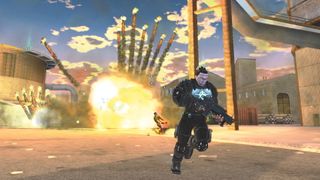
Your only hope of restoring order is to destabilise the three rival criminal factions scrapping for control of Pacific City, killing each of these crime-snakes by cutting off its crime-head. So, when you begin the game by stumbling out of the Agency’s besieged Keep and onto the mean streets of La Mugre, your stentorian handler explains that the ruthless Los Muertos drug cartel controls the area. To free this district from the gang’s sinful grasp, you’ll have to take down the operation’s formidable kingpin Don Domingo “El Brazo” Garcia.
Ubisoft recently borrowed a similar structure for Ghost Recon: Wildlands, which dropped players into a vast open-world filled with cartel cronies and tasked players with eliminating the organisation’s fearsome buchones one by one. But unlike Realtime Worlds’ open-world debut, Ubisoft insists on leading players through a linear chain of missions before allowing them to bring the pain to the bosses. By contrast, Crackdown is generously open and gloriously permissive. So, when your handler explains that the best way to take out El Brazo is to go after his generals first, you might take that at face value and begin methodically hunting down his lieutenants. The reward for your diligence is a significantly easier time when you go toe-to-toe with Garcia himself, who’ll have to defend himself without the aid of his most trusted criminal cronies.
Sign up to the 12DOVE Newsletter
Weekly digests, tales from the communities you love, and more
Alternatively, you could ignore the underlings and make a beeline for the kingpin himself. The ensuing battle will be tough, for sure, but Realtime Worlds places no artificial barriers on your murderous enthusiasm.
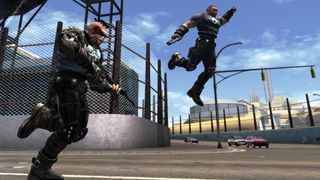
In fact, Crackdown constantly rewards your passion for extrajudicial executions thanks to its ‘skills for kills’ system, which awards upgrade orbs across five different disciplines depending on how you choose to dispatch your criminal adversaries.
At the most humdrum end of the spectrum is the firearms skill, which sees your every bullet-based kill rewarded with a flurry of orbs that will eventually unlock access to an expanded arsenal. The explosives skill is a little more exciting, since your rank in this department is raised by performing kills with grenades and rocket launchers. Level up far enough, and you’ll find that your bog standard pineapple generates vast conflagrations capable of sending enemies soaring across city blocks.
Melee kills boost your strength skill, which will eventually enable you to hurl pick-up trucks at your enemies like a steroidal shot putter. And then there’s the driving skill, which on face value could easily be the most boring of the bunch. But run over enough Pacific City ne’er-do-wells and you’ll discover that Agency vehicles now shift and transform themselves into new, more powerful configurations once you clamber in. The Agency Supercar, for instance, is pretty nippy even for a level 0 Agent. But when an Agent with a level 4 driving skill keys the ignition, this sleek machine essentially transforms into a neon-lit Batmobile. The Agency SUV is even madder, enabling fully-levelled Agents to drive up the sides of skyscrapers.
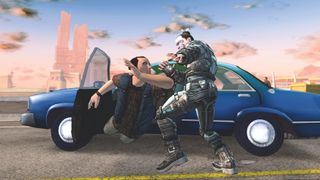
It all goes to show just how much can be achieved when a developer prioritises fantastical empowerment over finely-tuned balance. Find the right angle to attack a kingpin, and it’s usually easy to chip away at their health from afar, or spam them with explosives. But Crackdown isn’t really about the thrill of overcoming a perfectly-pitched challenge – it’s about leaping between skyscrapers, detonating gangbangers with insanely-overpowered grenades and dispatching your foes in whatever order or fashion you care to choose.
This sense of freewheeling, madcap fun is only bolstered by Crackdown’s excellent co-op support, which enabled two Agents to tackle crime side-by-side over Xbox Live. And if you thought that the game was chaotic when played solo, multiplayer could be almost overwhelming. As you hurl grenade after grenade towards foes, collateral damage is almost inevitable, as are the retributive grudge-matches that followed. Ask anyone who spent a lot of time with Crackdown’s co-op and they’ll tell you that if 50 per cent of their time was spent battling gangbangers, the other 50 per cent was spent trading rockets with their fellow Agent. All this multiplayer mayhem was seamlessly integrated, too, with Agents able to drop into another player’s Pacific City and drop out again without having to wade through tedious lobbies or matchmaking screens.
In fact, it’s probably fair to say that Xbox Live was central to Crackdown’s success, but it wasn’t the co-op mode alone that held the key to 1.5 million sales in 10 months. The game’s downloadable demo had a surprisingly significant part to play, too, and Crackdown quickly gained positive word of mouth from this free trial. But Realtime Worlds didn’t just pop the game’s opening onto the Xbox Live Marketplace – instead, the studio created a custom build of the game that was designed to enable super-speedy character progression. Demo Agents actually levelled up at 10 times the normal rate, enabling players to get a taste of the ‘skills for kills’ system within minutes of firing up the game. The numbers suggest that this generous tweak paid off handsomely: it’s estimated that roughly one in three demo players went on to purchase the final game.
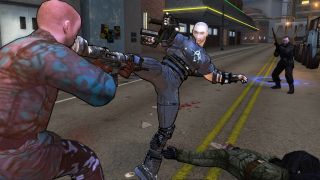
That’s not bad at all for a game that had received relatively little pre-release hype. Back then, Realtime Worlds theorised that this lukewarm response was partly to do with the game’s cel-shaded visual style. It looked perfectly adequate in motion, and enabled the studio to provide players with uninterrupted views of sweeping city skylines, but screenshots often looked uninspiring. If ever there was a game that would have benefited from boisterous fan videos and slick trailers, it was Crackdown. Unfortunately, it launched at a time when screenshots were still the most common way for players to get a sense of pre-release games.
So it’s safe to say that Crackdown could use all the help it could get, and Microsoft came through in a major way. The solution: a single sticker. This unassuming grey badge was plastered to copies of Crackdown worldwide, and it made a simple promise – buy this game, and you’ll receive access to the Halo 3 multiplayer beta. The response was enormous. It’s hard to say exactly how many people picked up Crackdown purely for that sweet beta access, but it certainly pushed a number of prospective purchasers over the edge. At our school, at least, the joke was that the Halo 3 beta cost £40 and came with a free coaster. That joke quickly tailed off when those meanteens got their grubby little mitts on Realtime Worlds’ crimefighting caper.

And then there were the achievements, yet another aspect of the Xbox Live infrastructure that Jones and co seemed determined to make full use of. And while we may take the system for granted nowadays, it’s worth noting that Microsoft only conceived of the achievement system midway through Crackdown’s development. Nevertheless, Realtime Worlds loved the way that these little rewards could be used to incentivise creative play, and produced hundreds of unique challenges designed to prod players towards different playstyles or simply reward dedicated exploration. It goes without saying, then, that the developer wasn’t content with the meagre 50 Achievement limit imposed by Microsoft at the time. Eventually, the big M responded to Realtime’s constant nagging, and upped their limit to 80 Achievements per game.
But ultimately, Crackdown could’ve shipped with eight achievements and still kept players flinging criminals around its cel-shaded sandbox, because there was an inherent pleasure to these overpowered antics. If you need any further proof, just look at those Agility Orbs again – still satisfying after all these years.
This article originally appeared in Xbox: The Official Magazine. For more great Xbox coverage, you can subscribe here.
James has been writing about games for more than a decade, covering everything from glittering masterpieces to PlayStation Home. Over the years, he's contributed to the likes of OXM, OPM, and GamesMaster, though he occasionally finds time to write for publications that don't get closed down, too. And although he was once Managing Editor of Warhammer Community, he actually prefers knitwear to ceramite.



